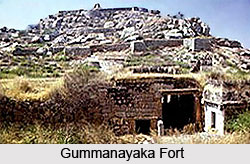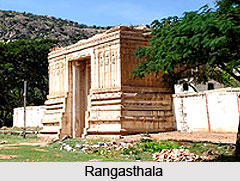 Tourism in Chikballapur comprises visits to various religious and historical places. The tourist attractions of this city of Karnataka attract the travellers from far and wide. This place is considered as an ideal tourist destination. Tourism in Chikballapur gives a pleasurable trip to the visitors. Moreover, Chikballapur also draws the attention of adventure lovers. There are several places of interest in Chikballapur, some of them are mentioned below.
Tourism in Chikballapur comprises visits to various religious and historical places. The tourist attractions of this city of Karnataka attract the travellers from far and wide. This place is considered as an ideal tourist destination. Tourism in Chikballapur gives a pleasurable trip to the visitors. Moreover, Chikballapur also draws the attention of adventure lovers. There are several places of interest in Chikballapur, some of them are mentioned below.
Chintamani: This town is famous for its gold and silver trade and its incense industry. One of the oldest Dargahs in Karnataka, the Murugmulla Dargah of Fakhi Shah Wali is located at about 8 kms from this town. It is visited by thousands of pilgrims every year.
Gummanayaka Fort: This fort is situated at around 16 kms east of Bagepalli, and was founded around 1350 by a feudatory chieftain Gummanayaka who ruled the region for several years. It is noted for its fortified circular rock, which rises 150 feet above the surrounding hilly tract.
Nandi Hills: Situated 60 kms north of Bengaluru and 1478 metres above sea level, Nandi Hill, earlier known as Nandidurga, was the summer retreat of Tipu Sultan. He expanded the existing fort, built by local feudatory chieftains, into twin forts. Attracted by the salubrious climate of this area, the British built spacious bungalows and laid beautiful gardens. They succeeded in converting Nandi Hills into a charming hill station. Adventure sports lovers can try their hand at parasailing. Nearby is the Yoga Nandeeshwara temple atop the hill.
Rangasthala: On the way from Chikkaballapur to Gouribidanur, this village has a beautiful temple of Lord Ranganatha in the Vijayanagar architectural style.
 Kaivara: This town is associated with the epic, Mahabharata. Known as Ekchakrapura, this is where the Pandavas lived during their exile period. Several legends are associated with this place. There is a beautiful garden complex in Kaivara which is worth visiting. Also, in the garden are five cottages named after the Pandavas. The temples of Amaranarayana and Bheemeshwara as well as the Yogi Narayana ashram of this place are worth a visit.
Kaivara: This town is associated with the epic, Mahabharata. Known as Ekchakrapura, this is where the Pandavas lived during their exile period. Several legends are associated with this place. There is a beautiful garden complex in Kaivara which is worth visiting. Also, in the garden are five cottages named after the Pandavas. The temples of Amaranarayana and Bheemeshwara as well as the Yogi Narayana ashram of this place are worth a visit.
Bhoganandishwara Temple: Bhoganandishwara temple in Nandi village is a popular tourist attraction of Chikballapur and it was constructed around 806 AD by Rathnavalli of Bana Dynasty, in Dravidian style. This temple is known for its ancient architecture. Sri Arunachaleswara temple, nearby Bhoganandishwara temple, is another example of a distinct Dravidian style of architecture
Srinivasa Sagara Kere: It is a beautiful lake, near Chikballapur.
Yoganandishwara Temple: Yoganandishwara temple on Nandi Hill was constructed in Dravidian and Chola style of architecture. This temple is worth visiting.
Surasadmagiri Hill : Surasadmagiri hill is located in the north west of Gudibanda town. It offers a magnificent view of the nature.
Apart from these attractions, Viswesharaiah Tomb, Papagni Matta, Aiyappa Temple, Chitravathi Temple, Muddenahalli, Tippudrop and Jakkalamadagu Dam are the other popular tourist places of Chikballapur.



















